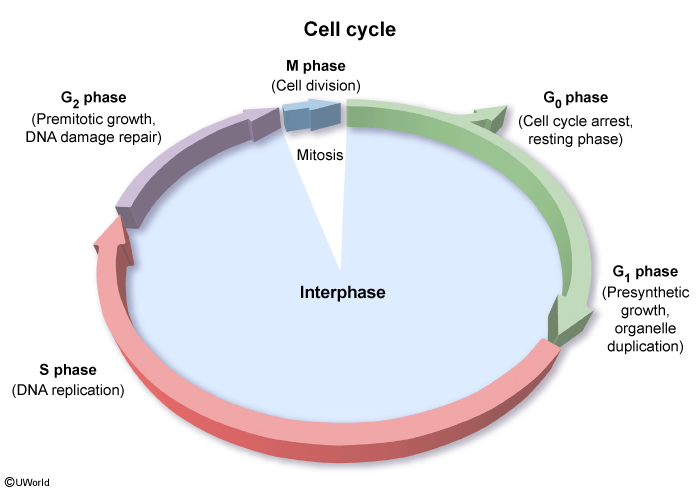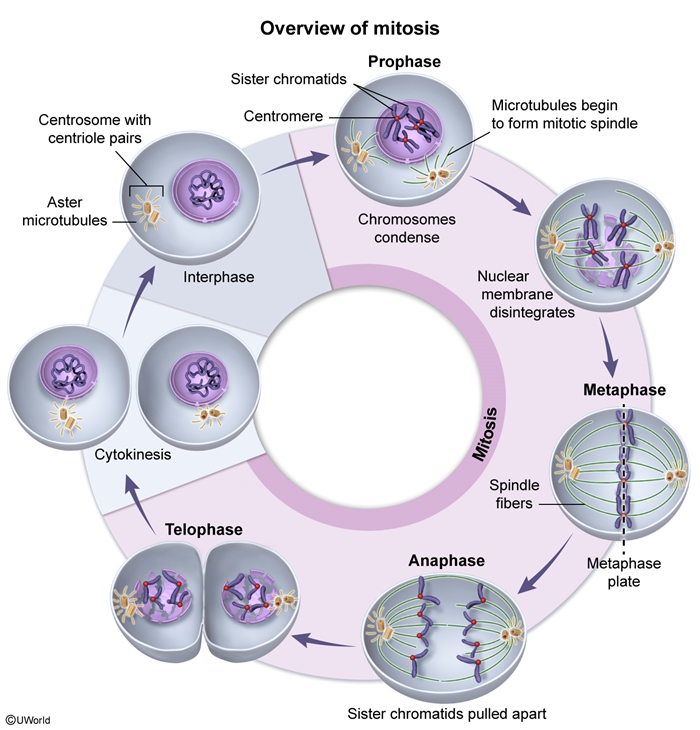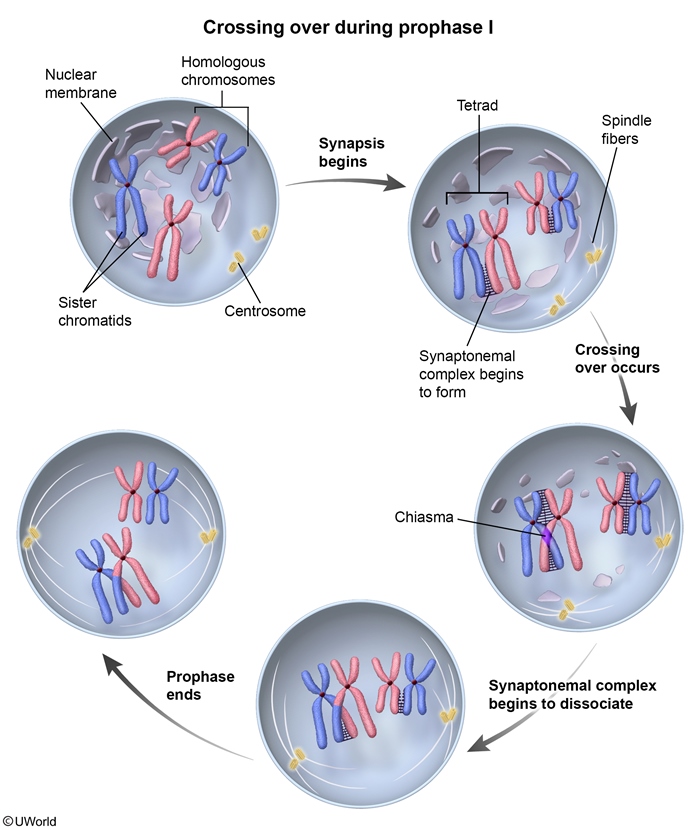Cell Division: Meiosis, Mitosis, And Cell Cycle Regulation
Article Sections
Introduction
The cell cycle facilitates the duplication and segregation of the cell's genetic information to form 2 identical daughter cells. The 2 major phases of the eukaryotic cell cycle are interphase and M (mitotic) phase. The cell spends approximately 90% of its life cycle in interphase, which is divided into G1 (first gap), S (synthesis), and G2 (second gap) phases. Mitosis involves nuclear division to form genetically identical daughter cells. Meiosis is a specialized form of cell division that leads to the formation of gametes (ova, sperm), which can then participate in sexual reproduction.
Interphase
Interphase is characterized by the following phases (Figure 1):
- G1 phase: Characterized by presynthetic cell growth, organelle duplication, and the production of proteins necessary for DNA replication. After G1, a subset of cells enters a specialized resting state called
Continue Learning with UWorld
Get the full Cell Division: Meiosis, Mitosis, And Cell Cycle Regulation article plus rich visuals, real-world cases, and in-depth insights from medical experts, all available through the UWorld Medical Library.
Figures





